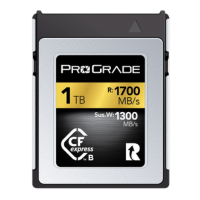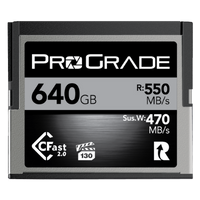Beyond the captivating frames and heart-pounding sequences lies a realm of meticulous memory card management. It’s the silent choreography of organizing and archiving, ensuring every moment takes the stage flawlessly.
In this guide, we unravel the best practices for memory card management. For videographers, this isn’t just about storage; it’s the critical orchestrator ensuring seamless storytelling. After reading this guide, you’ll not only master data management but also learn practical steps to organize and safeguard your videographic archives. So, let’s dive in!
Data Overload: The Videographer’s Challenge
Navigating the landscape of videography brings forth a unique challenge—large video files accumulate at a rapid pace, demanding robust management strategies to maintain efficiency and order. The sheer volume of data can quickly become overwhelming, making it imperative for videographers to adopt effective techniques for streamlined organization and archival.
Failure to effectively manage data in videography can lead to chaos and inefficiency. Without a structured approach to organization and archiving, you risk wasting valuable time searching for specific files, encountering difficulties in project collaboration, and facing the potential loss or corruption of critical footage. The consequences of poor data management not only disrupt workflow but also jeopardize the integrity of hard-earned video content. Hence, it’s essential to adopt sound practices to navigate the challenges posed by data overload. And it all starts with building a solid organizational framework.
Building an Organizational Framework: File Naming and Folders
Archiving video files effectively involves not just storing them but also implementing a robust system for retrieval, especially when dealing with a large volume of clips. The organizational framework is the foundation of effective data and memory card management.
Creating an effective organization system involves various elements like tags and transcriptions, but much of it depends on personal preference and your specific workflow. However, amid these choices, two components are universal—keeping folders well-organized and naming files systematically.
File Naming Conventions
The key to streamlined access lies in crafting consistent, descriptive file names. Start with a clear system—consider including project names, dates, and unique identifiers. This not only minimizes confusion but also enables quick identification of important footage. For instance, adopting a format like “ProjectName_Date_Scene_Take” ensures that each file holds a distinct identity, enhancing accessibility.
Remember, file naming conventions should align with your unique workflow. The goal is to strike a balance—while brevity aids efficiency, the file name should provide enough context for standalone comprehension.
Folder Structures
Now, let’s address the architectural blueprint: Folder Structures. Imagine your folders as the roadmap to your video library. Create a hierarchy that mirrors the logical flow of your projects. Begin with broad categories like “Projects” and then subdivide into specific endeavors. Within each project folder, further compartmentalize by elements such as “Footage,” “Audio,” and “Graphics.”
Adopting a chronological or thematic approach can also amplify organization. The key here is to design a structure that aligns with your workflow, making retrieval a breeze.
Archiving Video Files: Advanced Strategies
As your video library grows, the need for advanced archiving techniques becomes evident. To be able to find exact footage, i.e., plane flying, you need a comprehensive system that not only stores your video files securely but also ensures that you can efficiently retrieve and utilize specific footage when needed.
In this section, we delve into advanced strategies of memory card management for videographers and organizing and archiving best practices. Remember, you don’t have to incorporate every technique. Choose the ones that align with your workflow, the ones you actually benefit from.
- Advanced File Naming Patterns: As discussed earlier, adopting a consistent and descriptive file naming convention is critical. But there may be a point where you want to take it up a notch and move from only project-centric naming to version-control naming, collaboration-control naming, or any other identifiers that matter to your workflow. This ensures that each file has a unique identity, making it easier to find specific footage.
- Advanced Folder Hierarchies: Organizing your video files into a basic hierarchical folder structure only takes you so far. Whenever you need to retrieve files from different projects shot at different times, you need to create main folders for overarching categories (e.g., Projects, Years) and subfolders for more specific divisions (e.g., Project Names, Months). But you may also need to go with subfolders for different phases like “Pre-production,” “Production,” and “Post-production.”The goal of a more detailed structure is to help you narrow down your search and locate files more efficiently.
- Metadata Tagging: Attach relevant metadata to each video file. This includes details like keywords, descriptions, locations, and timestamps. Modern video editing software often allows you to add this information during the import or editing process. For example, tag a clip with “plane flying” or any other specific identifiers related to its content.
- Tagging Software: Utilize specialized tagging software that allows you to assign keywords and categories to your video files. This goes beyond basic folder structures and can provide a more flexible and dynamic way to organize and retrieve clips.
- Dedicated Database: For larger video libraries, consider using a dedicated database or media asset management (MAM) system. These systems provide advanced search functionalities, allowing you to search for specific criteria and quickly locate the exact footage you need.
- Transcription: If your videos contain spoken content, employing transcription services can be invaluable. Transcripts can be used as searchable text, making it easier to find specific dialogue or scenes within your video files.
- Visual Previews: Some media management tools generate visual previews or thumbnails of video content. This visual representation can aid in quickly identifying clips without having to play each video individually.
- Content Cataloging: Maintain a catalog or spreadsheet that details the contents of each video file, including a brief description, key scenes, and any notable timestamps. This catalog can serve as a quick reference guide, especially when dealing with extensive video archives.
- Ensuring Integrity: Making sure your video files stay safe and reliable is paramount, and data verification is like a digital guardian that helps with that. Use tools like “md5deep,” which create special codes (like fingerprints) for each file. Regularly check these codes to make sure your video files are still good. This process protects your videos from potential problems, keeping your creative work safe and sound over time. It’s an easy way to ensure your videos stay the way you made them.
Popular Cataloging Software for Video Archive Management
Selecting the right cataloging software is one of your most important decisions. You really need to make sure it matches your specific workflow, preferences, and the scale of your video archive. Each cataloging software comes with its own set of features. If you do not consider your needs carefully before making a choice, you may need to move the entire library from one catalog to another, which can be an extremely time-consuming task.
Here are five widely used cataloging software options for you to consider:
-
- Key Features: Integrated with Adobe Creative Cloud, metadata support, and batch processing.
- Suitable For: Adobe software users looking for seamless integration and comprehensive metadata capabilities.
-
- Key Features: Fast browsing and tagging, advanced metadata support, and robust file management.
- Suitable For: Photographers and videographers needing a quick and efficient way to organize and cull large batches of files.
-
- Key Features: Catalogs external drives, supports extensive metadata, and offers powerful search options.
- Suitable For: Those with large external storage needs and prefer comprehensive metadata management.
-
- Key Features: Fast media transfer, automated organization, and easy project tracking.
- Suitable For: Filmmakers and video producers requiring quick and reliable data transfer and organization.
-
- Key Features: Media management, logging, and easy file organization.
- Suitable For: Professionals working with a variety of video formats seeking a straightforward and intuitive solution.
Seamless Workflow: Practical Tips for Videographers
Here are three practical workflow tips to seamlessly integrate effective file management into your daily routine:
1. Take Time to Establish Your Organizational Framework
Lay the groundwork for long-term success by taking time to develop your organizational framework. It’s essential to spend some time planning and thinking things through to get it right from the start. This ultimately saves you time down the road. It can be an incredibly time-consuming task if you need to rename thousands of video files or shift them from one catalog to another due to a change in your organizational structure. Consistency in your naming and metadata strategies prevents headaches down the line and ensures a smooth workflow.
2. Educate Team Members
No use for a well-thought-through system if only you know how it works. Foster team-wide adherence for uniformity across projects. Ensure everyone on your team understands and follows these practices. Conduct training sessions to familiarize team members with naming conventions, folder structures, and verification processes. Regularly reinforce the importance of these practices for collective success.
3. Adaptation to Evolving Workflows
As important as it is to get your organizational framework right from the start so you don’t have to go through time-consuming changes later, it is equally important to recognize if the system is not serving you anymore. Holding on to a system and following it simply because it’s established and has served you well in the past might hinder your efficiency. Stay flexible and adapt these practices as your workflow evolves. Periodically review and refine your file management system to accommodate changing project requirements.
Conclusion: Elevating Your Videography Through Effective Management
Elevating your memory card management game in videography is more than just an organizational task—it’s a key factor in maximizing efficiency and safeguarding your creative work. By embracing these practices, you’re not just managing files; you’re orchestrating a smooth and efficient video production process. Say goodbye to clutter and hello to a well-organized workflow ready to meet any creative challenge head-on.
Remember, a well-maintained memory card and effective file management system empower you to focus on what truly matters—capturing exceptional moments and creating high-quality video content. Don’t just capture memories; make them last with smart memory card management.
Take the first step …
Maximizing efficiency and safeguarding your creative work starts with reliable memory cards. ProGrade Digital manufactures the highest-grade memory cards for filmmakers like you. With ProGrade Digital memory cards and workflow readers, every moment is captured, stored, and delivered with unmatched precision.





